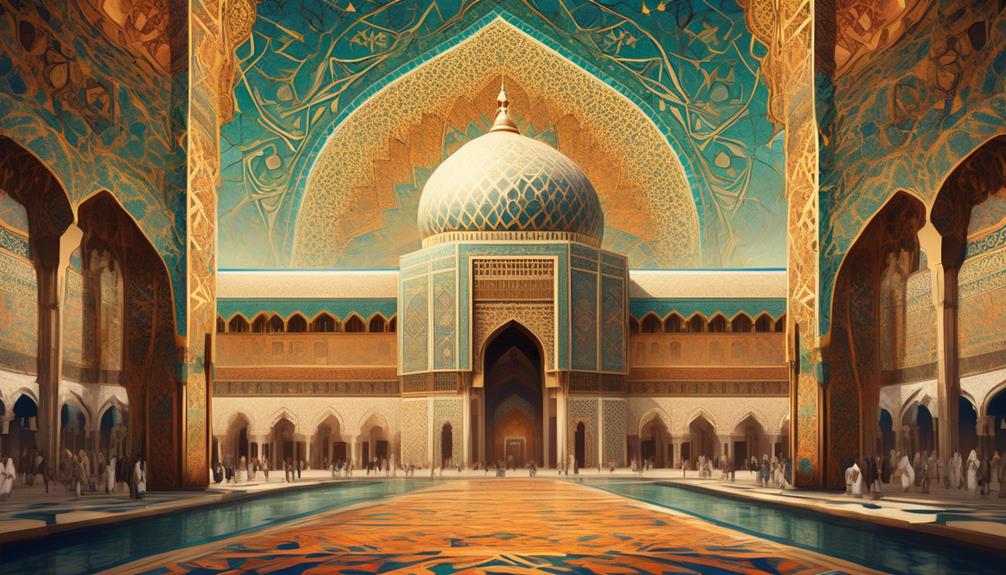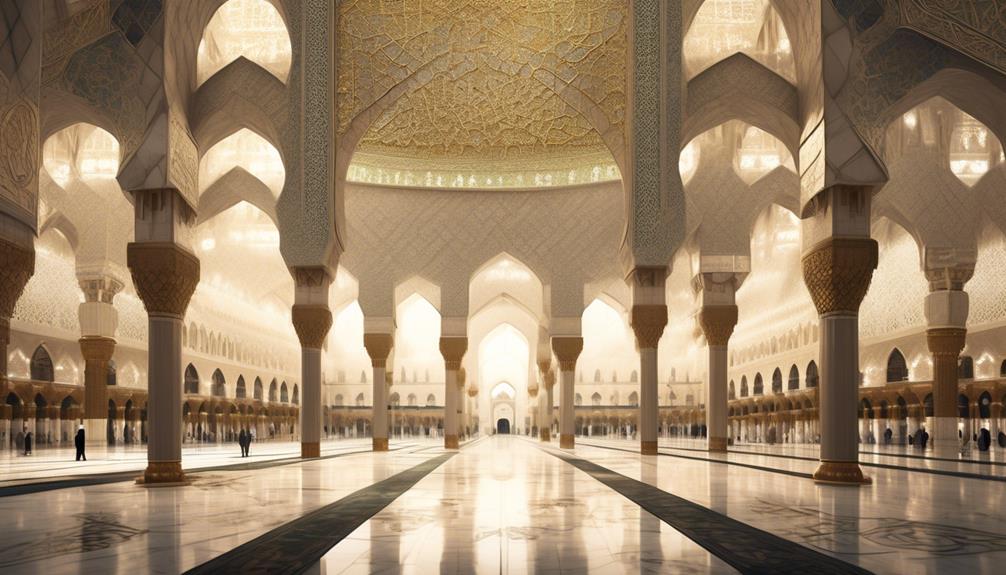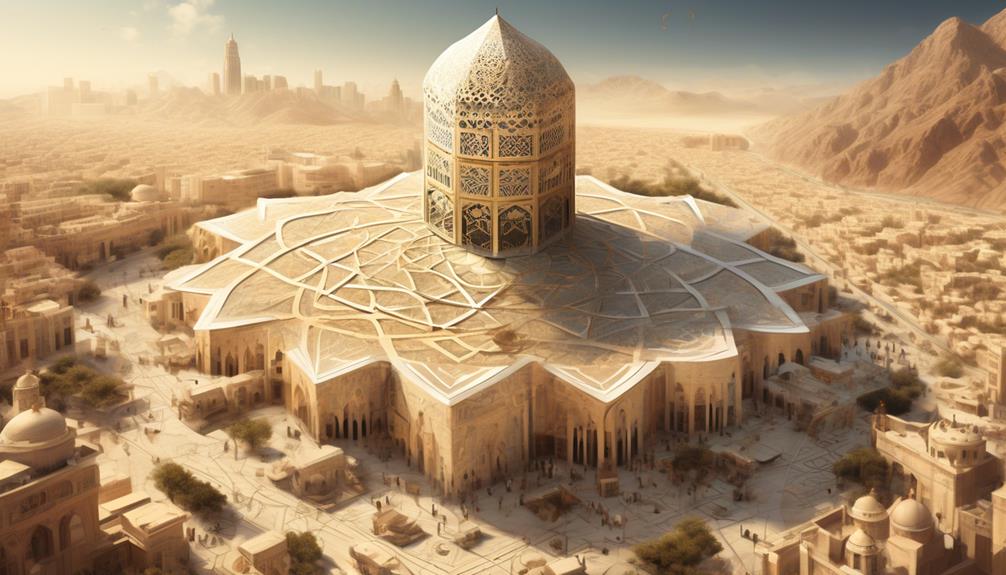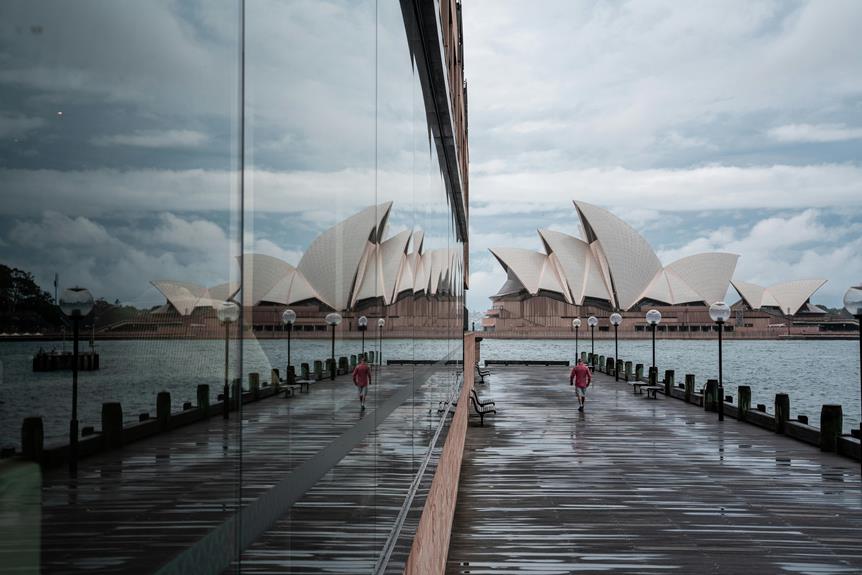As web designers, we are constantly seeking inspiration from various sources to create visually captivating and memorable online experiences. In our quest for inspiration, we often find ourselves drawn to the rich cultural heritage of different regions, each with its own unique architectural marvels.
Mecca, with its sacred significance and breathtaking symmetry, offers a treasure trove of inspiration for web design. In this discussion, we will explore the significance of sacred symmetry in Mecca's heritage, delve into the architectural marvels that have stood the test of time, and uncover the valuable lessons we can learn from infusing sacred geometry into our web design.
Prepare to be captivated by the beauty and depth of Mecca's heritage, and discover how it can shape the digital experiences we create.
The Significance of Sacred Symmetry in Mecca's Heritage

Sacred symmetry plays a pivotal role in Mecca's rich heritage, encapsulating the profound significance and spiritual essence of the holy city. Mecca, as the birthplace of Islam and the destination of millions of Muslim pilgrims each year, holds a deep religious and cultural significance. The concept of sacred symmetry is deeply ingrained in the design and architecture of Mecca, reflecting the harmony and balance that is sought in the spiritual journey.
The Kaaba, the most sacred site in Islam, stands as a testament to the importance of symmetry in Mecca's heritage. The structure itself is a cubic building with each side aligned to the cardinal directions. This perfect symmetry represents the unity and oneness of God, as well as the equality and unity of all believers in their worship.
Furthermore, the Masjid al-Haram, the grand mosque in Mecca that surrounds the Kaaba, is also designed with sacred symmetry in mind. The mosque's courtyard, known as the Haram, is a vast space that is meticulously laid out with symmetrical patterns and geometric motifs. These patterns, often referred to as tessellations, create a sense of order and balance, enhancing the spiritual experience of the worshipers.
Exploring the Architectural Marvels of Mecca for Web Design Inspiration

Drawing inspiration from Mecca's architectural marvels, web designers can create visually stunning and spiritually immersive online experiences. Mecca is home to some of the world's most breathtaking buildings, such as the Great Mosque of Mecca and the Abraj Al-Bait Clock Tower. These structures showcase intricate designs, grandeur, and a deep sense of spirituality.
By studying the architectural details of these marvels, web designers can incorporate elements such as symmetry, geometric patterns, and ornate decorations into their designs.
The Great Mosque of Mecca, with its iconic Kaaba at its center, is a symbol of unity and devotion for Muslims worldwide. Its architectural features, such as the ornate arches, intricate calligraphy, and intricate geometric patterns, can be translated into web design elements. These elements can create a sense of harmony and balance on a webpage, capturing the essence of Mecca's heritage.
Additionally, the Abraj Al-Bait Clock Tower, one of the tallest buildings in the world, showcases a fusion of modern and traditional Islamic architecture. Its sleek lines, towering minarets, and golden accents can inspire web designers to create websites that exude elegance and sophistication.
Infusing Sacred Geometry Into Web Design: Lessons From Mecca's Heritage

By incorporating the principles of sacred geometry, web designers can create visually captivating and spiritually resonant online experiences that draw inspiration from the rich heritage of Mecca.
Sacred geometry is a mathematical framework that is believed to hold deep spiritual significance and is found in many ancient cultures and religious traditions. Mecca, being the birthplace of Islam and home to the Kaaba, holds a special place in the hearts of Muslims around the world. Its architectural marvels, such as the Great Mosque and the Black Stone, showcase intricate geometric patterns that symbolize the unity and harmony of the Islamic faith.
When it comes to web design, infusing sacred geometry can add a sense of sacredness and harmony to the digital experience. Design elements like geometric patterns, symmetrical layouts, and intricate tessellations can be used to create visually stunning websites that resonate with users on a deeper level. These elements can evoke a sense of spiritual connection and reflect the divine beauty of Mecca's architecture.
Furthermore, sacred geometry can also enhance the functionality of a website. The precise proportions and harmonious ratios found in sacred geometry can be applied to create intuitive user interfaces and enhance the user experience. By aligning elements and creating balanced compositions, web designers can guide users through the website effortlessly, creating a smooth and harmonious browsing experience.
Frequently Asked Questions
How Does the Use of Sacred Symmetry in Mecca's Heritage Impact the Overall Spiritual Experience for Visitors?
The use of sacred symmetry in Mecca's heritage enhances the overall spiritual experience for visitors. It creates a sense of harmony, balance, and divine order, allowing individuals to feel a deeper connection to the sacred space and their spiritual journey.
Are There Specific Architectural Features in Mecca That Are Commonly Used in Web Design Inspired by Its Heritage?
Specific architectural features in Mecca commonly used in web design inspired by its heritage include intricate geometric patterns, domes, arches, and minarets. These elements evoke a sense of spirituality and cultural significance, creating a visually stunning and immersive online experience.
What Are Some Practical Examples of How Sacred Geometry Can Be Incorporated Into Web Design?
Sacred geometry can be incorporated into web design by utilizing symmetrical patterns, such as the golden ratio, to create visually appealing and harmonious layouts. This can be seen in the balanced placement of elements, use of geometric shapes, and proportional scaling of images.
Are There Any Cultural or Religious Considerations to Keep in Mind When Infusing Sacred Geometry Into Web Design?
When infusing sacred geometry into web design, it is crucial to consider cultural and religious sensitivities. Understanding the significance and symbolism of sacred symbols in different cultures can help ensure respectful representation and enhance the overall user experience.
Can the Principles of Sacred Symmetry Be Applied to Other Design Disciplines Apart From Web Design?
Yes, the principles of sacred symmetry can be applied to other design disciplines apart from web design. By understanding the underlying principles and symbolism of sacred geometry, designers can incorporate these elements into various mediums to create visually harmonious and meaningful designs.
Conclusion
In conclusion, the sacred symmetry found in Mecca's heritage holds great significance and serves as a rich source of inspiration for web design.
The architectural marvels of Mecca showcase the beauty and harmony achieved through the use of sacred geometry. By infusing these principles into web design, designers can create visually pleasing and harmonious websites.
The heritage of Mecca provides valuable lessons on incorporating sacred symmetry into web design, resulting in a captivating and meaningful user experience.

